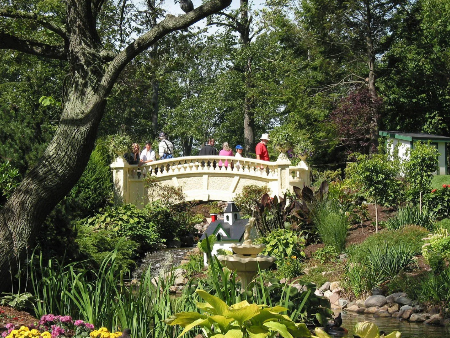Halifax's Public Gardens
History, Design, and Beauty: Exploring the Halifax Public Gardens
Halifax Public Gardens is a historical site that showcases the beauty of nature in the heart of Halifax. It is one of the oldest Victorian Gardens in North America and is considered a national treasure. The gardens have been a popular destination for locals and tourists alike since it first opened to the public in 1867. With its unique features, such as the serpentine beds, raised carpet beds, and magnificent trees, the Halifax Public Gardens has become a symbol of Halifax's rich cultural heritage.
The Halifax Public Gardens is an oasis of tranquillity in the heart of a bustling city. The gardens' Victorian-style design is evident in the scroll beds shaped in an E for the ruling king, the serpentine beds, and the raised carpet beds that create a stunning display of colours throughout the year. The gardens are home to over 240 species of trees, many of which are original to the garden. The Victorians had a passion for education and introduced many new plant species to Nova Scotia, making the Halifax Public Gardens an essential site for botanists and horticulturists.

One of the most notable features of the Halifax Public Gardens is Horticultural Hall, which dates back to 1837. It was the original meeting place of the Nova Scotia Horticultural Society and now houses a café, where visitors can enjoy a cup of coffee or a light snack while taking in the beautiful scenery.
The gardens have undergone several transformations over the years, but the Victorian-era design remains intact. The gardens were designated a National Historic Site of Canada in 1984 and have since become a popular destination for weddings and prom photos. With three water fountains, two stone bridges, three ponds, and a small concession building, the gardens are the perfect place for a leisurely stroll or a picnic with friends and family.
The Halifax Public Gardens is not just a beautiful park, but it is also a site of cultural significance. The gardens offer a variety of events throughout the year, including music performances on the bandstand, celebrations on Canada Day and Natal Day, and guided tours that explore the history and beauty of the gardens.
The Halifax Public Gardens suffered significant damage during Hurricane Juan in 2003, which forced its closure for several months. However, with the help of a community fundraiser that raised $1 million, the gardens were restored and reopened on Canada Day in 2004. Many old trees survived the hurricane, including an American elm that dates back to the 1860s.
In conclusion, the Halifax Public Gardens is a natural and national treasure that has stood the test of time. With its Victorian-style design, unique features, and rich cultural heritage, it is a must-visit destination for anyone visiting Halifax. Whether you are a botanist, horticulturist, or simply someone who appreciates the beauty of nature, the Halifax Public Gardens has something to offer everyone.
If you’re planning a trip to the Halifax Public Gardens, there are a few resources that can help you make the most of your visit. The Nova Scotia Visitor Information Centre is a great place to start. They have six locations throughout the province, including one in Halifax, where you can drop in for information on Nova Scotia’s travel experiences. Their friendly and knowledgeable travel counsellors and tourism ambassadors can help you plan your trip and make the most of your time in Halifax.
Another useful resource is the Tourism Nova Scotia website. Here you can find information on visitor centres, travel guides, and top attractions and experiences throughout the province.